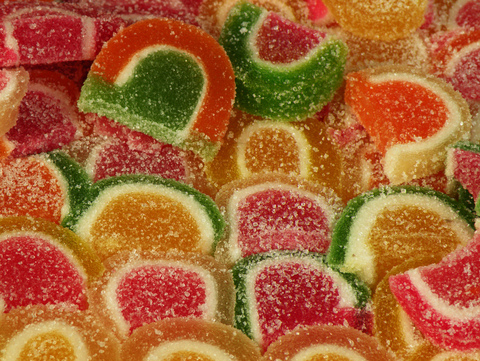
If you’ve been following your dentist’s advice, you know that you should be devoting two minutes twice a day to gentle, thorough brushing, and floss carefully at least once a day. It’s automatic. It’s habit. You’re in the zone. Now that you have braces or aligners, though, it’s time to step up your game!
Removing Food Particles
No one wants to worry about food particles stuck in braces right after lunch—or, worse, noticed hours after lunch! Because food tends to stick around brackets and wires, Dr. Curtis N. Kamisugi and our Aiea, Hawaii team recommend brushing after a meal. Not only will you be confident in your smile, you’ll be improving your dental health.
But why?
Better Plaque Removal
Plaque is a sticky film containing acid-producing bacteria. These acids lead to weakened enamel and, eventually, cavities. Careful brushing with a fluoride toothpaste helps eliminate plaque. But as you may have discovered, it can be more difficult to clean around brackets and wires. Brushing after eating will help keep plaque from forming on your enamel, and using the right tools (floss made for braces and interproximal brushes) will help clean plaque more effectively.
But what about aligners?
If you wear clear aligners, you take them out when you eat. This avoids the problem of food particles trapped in brackets and difficulty brushing around wires. But this doesn’t mean you are home free. Brushing after every meal is also a good idea when you wear aligners.
Our teeth have an organic way to help remove food particles, acids, and bacteria between brushings—saliva! Your aligners, while covering your teeth, decrease their exposure to saliva. It’s really important, then, to make sure you brush after eating. Otherwise, food particles and acids can remain on your teeth after you replace your aligners, increasing the risk of enamel erosion and decay.
Brushing helps keep your aligners clear as well. If you notice aligner discoloration, this could be the result of food residue such as tomato sauce or coffee that remained on the teeth after a meal. Anything that stains your enamel can stain your aligners. And don’t forget about plaque. Plaque can stick not only to your enamel but to your aligners as well. If you notice that your aligners are cloudy, or have an unpleasant odor, talk to us about the best way to keep them their cleanest.
Make a Plan
So, what can you do to make brushing more convenient during a busy day? Be prepared! Keep a small kit with you containing a travel brush, a small tube of toothpaste, floss, and an interproximal brush for quick cleanings when you’re out and about, and you’ll never have to worry about your smile.
Of course, there are occasions when it’s just not possible to brush. At times like this, whether you have traditional braces or aligners, it’s a good idea to rinse well with water after meals or snacks, and brush as soon as you can.
Start your new dental routine now, and soon it will be automatic. An everyday habit. Your new comfort zone. After all, taking a few extra minutes from your day to brush after every meal will be well worth it when you end your orthodontic treatment with a smile that is as healthy as it is beautiful!

One word no one likes to hear is “cavity!”
For those patients of ours wearing braces, hearing that word is especially problematic, considering that delaying any dental work may result in delaying treatment time.
We often blame candy as the culprit behind tooth decay, but other foods and drinks that kids consume can be just as harmful to their teeth, and can lead to cavities and tooth decay. Keeping your teeth or your child’s teeth from decay during treatment starts with a proper diet, and today, our team at Kamisugi Orthodontics will explain the negative effects that candy and other treats, including peanut butter, raisins, fruit juice, and chewy fruit snacks, have on your child’s teeth as he or she undergoes orthodontic treatment. Keep in mind that half of your child’s sugar intake may be coming from beverages that he or she drinks. A major offender is soda, but be mindful of fruit juices as well.
While sugar is known to sit in your child’s teeth and in between and under brackets and wires after consumption, it is important to know sugar is not the only cavity-causing culprit. Carbohydrates, starches, acids, and any food that is chewy or sticks break down into sugars, and can promote tooth decay.
So, what are the alternatives?
Candy such as dark chocolate, sugar-free gum, or anything that contains xylitol, a sugar substitute, is not as harmful for your teeth as hard, chewy, or sticky sweets. Sugar-free gum or gum that contains xylitol are known to reduce levels of bacteria on teeth.
And if you’re still looking for something to snack on, we recommend cutting up easy-to-eat fruits and vegetables. You would also be surprised how much eating a banana or sipping on a glass of water helps you curb snack cravings.
If you’re one of those folks who just can’t stay away from sweets, we encourage you to brush your teeth immediately afterward and swish water in your mouth.
Whatever you eat, Dr. Curtis N. Kamisugi and our team want you to remember to brush often, floss regularly, and visit your general dentist as your treatment progresses. If you have any questions about sugary foods or drinks, please give us a call or ask us during your next adjustment visit!

Orthodontic treatment involves a lot more than just straightening your teeth. For a healthy smile, your bite must be healthy as well! This means that the upper and lower jaws need to fit together properly and comfortably.
If your bite is out of alignment because of jaw misalignment, orthodontic treatment can help correct the shape and position of your jaws with devices called functional appliances. These appliances are most often used for young patients whose bones are still growing, and are designed to treat malocclusions, or bite problems.
Common malocclusions such as overbites and overjets can occur when the upper teeth protrude further than they should, or the lower jaw is positioned too far back, or both. The Twin Block appliance can be used in such cases to help move your lower jaw and teeth into alignment with your upper jaw.
Why “Twin”? Because the Twin Block appliance is two separate pieces, each made of wire and smooth acrylic. Both pieces are crafted to fit precisely over your upper and lower arches and can be adjusted as your treatment progresses. The top plate can also be adjusted, if necessary, to widen the upper palate.
Why “Block”? Acrylic blocks cover the biting surfaces of several of your upper and lower teeth. These blocks fit together like a 3D puzzle. When you bite down, the upper blocks interlock with the lower blocks, pushing the lower blocks forward just a bit before you can bite down completely. Over time, bit by bit (and bite by bite), the Twin Block appliance advances your lower jaw and teeth to create a balanced, comfortable bite.
For the quickest and best results, you should wear your Twin Block appliance as directed. It’s made to be worn comfortably while you sleep, eat, and otherwise go about your day. (It’s a good idea to check with our Aiea, Hawaii orthodontic team to see about removing it when you’re active, especially for swimming and contact sports.) When it’s time to brush, the Twin Block appliance is removable. This means that you can clean your teeth and your appliance easily.
And, while it’s made to work hard for you, it’s not indestructible. Don’t expose your appliance to heat or hot water, as the plastic may warp. Use the cleaning methods we recommend. Finally, when your appliance is out of your mouth, keep it in its case! You don’t want your appliance to end up carefully wrapped in a napkin in the nearby recycling bin. Or, even worse, in your dog’s mouth instead of yours.
The Twin Block appliance might fit together like a puzzle, but there’s nothing puzzling about how to achieve your best and fastest results. Your success really depends on you. Follow Dr. Curtis N. Kamisugi and our team’s advice, wear your appliance as directed, and you’ll be on your way to a healthy, comfortable bite and an attractive, confident smile!

Breakfast is called the most important meal of the day for many reasons. Children need to refuel after a long night’s sleep, and studies suggest that school kids who eat a good breakfast have more energy, better attendance and behavior, and even higher test scores than kids who don’t.
But sometimes, especially with new braces or braces that have just been adjusted, the last thing on your child’s mind is breakfast. Fortunately, Dr. Curtis N. Kamisugi can recommend many early morning options that will be both gentle on braces and healthy for growing bodies!
Soft, creamy, and filled with calcium and vitamin D, yogurt is an easy and nutritious choice. Try different fruit flavors or Greek yogurt for variety.
Packed with protein, scrambled eggs are delicious on their own, or with the addition of cheese or soft veggies. If you’d like to add a bit of flair to the table, a cheese omelet is another great choice. Any egg option is a good one—just remember to skip the crunchy toast on the side.
Not only a great way to start your day, but a great way to get vitamins and minerals in one delicious meal. And with a flavor base of banana, mango, berries, or apple, no one will notice if some spinach or kale make their way into the blender!
Unfortunately for the cereal lover, crunchy cereals and even granola are potentially damaging to wires and brackets. But oatmeal is a healthy alternative that can be made even tastier with the addition of soft fruits such as mangos, berries, and bananas.
Crunchy and chewy breads and pastries can lead to broken brackets and wires. Soft breads, pancakes, non-crunchy French toast, and soft pastries are much kinder to braces. Because so many of these options are rich in sugar (especially with syrup!), it’s best to go lighter on foods like this and be sure to brush carefully afterward.
Bananas, peaches, nectarines, berries—if it’s soft, it’s good to go! Cut larger fruits into bite-sized pieces. Dried fruits like raisins, dates, and cranberries can be chewy, sticky, and sugary, so best to take them off the shopping list for the time being.
It’s described as the most important meal of the day for many good reasons. With some of these easy-to-prepare breakfasts, you can add delicious, healthy, and braces-friendly to that description! If you stumble on a delicious recipe, don’t forget to share it the next time you visit our Aiea, Hawaii office!